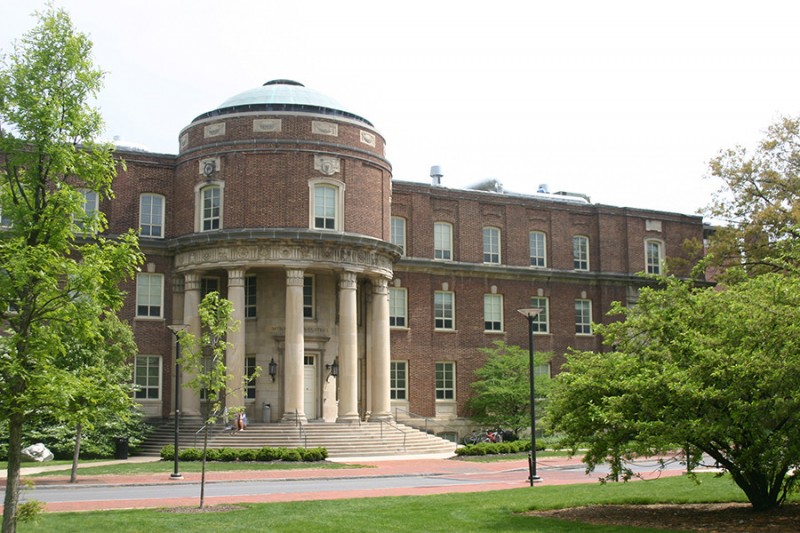Penn State has joined the U.S. Department of Energy’s Better Buildings Challenge and pledged to reduce its building portfolio’s energy use by 20 percent over the next decade. With a commitment of 28 million square feet, Penn State becomes the largest university in the program, topping Michigan State (20 million square feet) and the University of Virginia (15 million).
Penn State has joined the U.S. Department of Energy’s Better Buildings Challenge and pledged to reduce its building portfolio’s energy use by 20 percent over the next decade.
Penn State is joining more than 200 Better Buildings Challenge partners from local governments, school districts and universities, multifamily housing to commercial real estate, health care and manufacturing companies. Partners have committed more than 3 billion square feet and 600 manufacturing plants and facilities to energy-efficiency upgrades.
“As a longstanding leader in sustainable energy practices, I’m pleased that Penn State has joined the federal government, businesses and academic partners in this ambitious challenge,” said Penn State President Eric Barron. “Penn Staters have been very supportive of our sustainability efforts, and I look forward to a united effort to achieve this important goal that will benefit generations to come.”
“As a longstanding leader in sustainable energy practices, I’m pleased that Penn State has joined the federal government, businesses and academic partners in this ambitious challenge.
— Penn State President Eric Barron
Penn State’s Office of Physical Plant (OPP) established an aggressive energy conservation program in 2003 and has invested almost $75 million over the past decade improving utility production and tuning up existing buildings to optimize their performance — building heating, ventilation and air conditioning upgrades, updating temperature controls, retrofitting lighting fixtures, installing occupancy sensors and weatherproofing exteriors.
“Penn State has gone beyond a few, signature projects to make conservation a standard practice in all of our retrofits and major maintenance projects,” said Steve Maruszewski, assistant vice president for Penn State’s Office of Physical Plant.
The University is in the process of executing a $60 million investment over the next five years in energy efficiency and conservation initiatives for buildings. This is in addition to the multimillion dollar budget for retrofits and renewal of existing buildings that will account for more than 60 percent of the University’s five-year, $2.7 billion capital plan. Renovations that will include heat recovery and improved building exteriors are already underway at the Steidle, Burrowes and Mueller buildings on Penn State’s University Park campus.
“We educate nearly 100,000 students on 23,000 acres of land in 32 million square feet of buildings,” said David Gray, senior vice president for Finance & Business. “We are seizing an unprecedented opportunity to model a large-scale commitment to sustainability.”
“We educate nearly 100,000 students on 23,000 acres of land in 32 million square feet of buildings. We are seizing an unprecedented opportunity to model a large-scale commitment to sustainability”
— David Gray, senior vice president for Finance & Business
Better Buildings partners are sharing their energy performance results for more than 9,000 facilities and have posted on the Better Buildings Challenge website 130 unique and innovative solutions including showcase projects and implementation models to help the marketplace move more quickly to adopt energy efficiency measures. Partners are on-track to meet the 20 percent goal and have successfully reduced the energy use of their buildings and industrial facilities by 2.5 percent each year with savings of 36 trillion Btus or $300 million since the program launched.
For a detailed progress report on the Better Buildings Challenge partners and to find more about their energy efficiency projects and solutions, visitenergy.gov/betterbuildingschallenge.
To learn more about sustainability at Penn State, visit sustainability.psu.edu.
